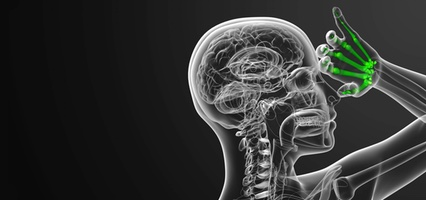
The goal of this challenge was to detect 6 different events related to hand movement during a task of grasping and lifting an object, using only EEG signal. We were asked to provide probabilities for the 6 events and for every time sample. The evaluation metric for this challenge was the Area under ROC curve (AUC) averaged over the 6 event types.
From an EEG point of view, brain patterns related to hand movement are characterized by spatio-frequential change in EEG signal. More specifically, we expect to see a decrease of signal power in the mu (12hz) frequency band over the contralateral motor cortex coupled with an increase of power in the ipsilateral motor-cortex. Since these changes occur during/after the execution of the movement, and considering that some events are labelled at the beginning of the movement (eg. Hadstart) while some others the end of the movement (eg. Replace), it was very difficult to build a single model scoring uniformly over the 6 different events. In other words, depending on the event you try to classify, it was a prediction problem, or a detection problem.
The 6 events were representing different stages of a sequence of hand movements (hand starts moving, starts lifting the object, etc.). One of the challenges was to take into account the temporal structure of the sequence i.e. the sequential relationship between events. In addition, some events were overlapping, and some others were mutually exclusive. As a result, it was difficult to follow a multiclass approach to this problem, or to use Finite State Machine to decode the sequence.
I entered this challenge in team with Rafal Cycon with whom I won the previous BCI challenge.
Our wining solution was a complex 3-level pipeline relying on many features type and more that 50 different models ensembled with Recurrent neural network and XGboost.
During this challenge, two of my scripts were electred script of the week and provided getting started content for other contestants:
For more insight about our solution, I encourage you to check this blog post